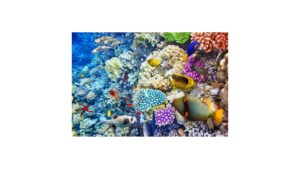Blog
The Future of Ocean Restoration
The Future of Ocean Restoration
The ocean, which covers over 70% of our planet, is a vital part of the Earth’s ecosystem, providing oxygen, regulating climate, and supporting a vast array of marine life. However, centuries of industrialization, pollution, and climate change have taken a toll on the health of our oceans. The concept of “Reviving the Ocean” represents a transformative approach to restoring and preserving this critical resource. This article explores the current state of our oceans, innovative strategies for restoration, and the promising future of ocean revival.
LINK DOMAIN javanet247.com
1. Restoration Climate Change:
Rising global temperatures are causing ocean acidification and coral bleaching. Ocean acidification occurs as CO2 levels increase, leading to a decrease in pH levels that affects marine organisms, particularly those with calcium carbonate shells and skeletons. Coral reefs, often referred to as the “rainforests of the sea,” are especially vulnerable to temperature changes, leading to widespread bleaching events.
Overfishing: Overfishing depletes fish populations and disrupts marine ecosystems. Unsustainable fishing practices can lead to the collapse of fish stocks and damage to ocean habitats.
Habitat Destruction: Coastal development, bottom trawling, and other human activities have led to the destruction of vital marine habitats such as mangroves, seagrasses, and coral reefs.
Artificial Reefs: Artificial reefs are human-made structures placed on the ocean floor to provide habitats for marine life. These structures can be made from various materials, including concrete, metal, or recycled materials, and are designed to mimic natural reef systems. Artificial reefs help to restore degraded areas and create new ecosystems for marine species.
Coral Reef Restoration: Coral reefs are essential to marine biodiversity, but they are under severe threat from climate change and pollution. Restoration efforts involve growing corals in nurseries and transplanting them onto degraded reefs. Scientists are also researching ways to enhance coral resilience to heat and acidification through selective breeding and genetic modification.
Plastic Waste Solutions: Addressing plastic pollution involves both preventing plastic waste from entering the ocean and removing existing plastic. Innovations include developing biodegradable plastics, improving waste management systems, and using technologies such as ocean cleanup devices to collect plastic debris. Community initiatives and policy changes are also crucial in reducing plastic consumption and improving recycling efforts.
Sustainable Fisheries: Sustainable fishing practices aim to balance fish populations with human consumption. Techniques such as quota systems, bycatch reduction, and the use of selective fishing gear help to minimize the impact on marine ecosystems. Certification programs like the Marine Stewardship Council (MSC) provide guidelines for sustainable seafood production.
Seagrass and Mangrove Restoration: Seagrasses and mangroves are critical coastal ecosystems that provide nursery grounds for fish, protect shorelines from erosion, and sequester carbon. Restoration projects involve replanting seagrasses and mangroves in areas where they have been lost or degraded. These efforts contribute to coastal protection and biodiversity enhancement.
The Promising Future of Ocean Revival
The future of ocean revival is bright, thanks to technological advancements, scientific research, and global collaboration. Here’s what to look forward to

2.Restoration Advanced Monitoring Technologies:
New technologies are improving our ability to monitor and understand ocean health. Autonomous underwater vehicles (AUVs), remote sensing, and satellite imaging provide valuable data on ocean conditions, marine life, and pollution. These technologies enable more effective management and restoration strategies.
Genetic Research and Biotechnology: Genetic research is opening up new possibilities for ocean restoration. Scientists are studying the genetics of marine species to understand their resilience and adaptability to environmental changes. Biotechnological innovations, such as engineered microbes that can break down pollutants or enhance coral growth, hold promise for accelerating restoration efforts.
Reviving the Ocean: The Future of Ocean Restoration
The ocean, which covers over 70% of our planet, is a vital part of the Earth’s ecosystem, providing oxygen, regulating climate, and supporting a vast array of marine life. However, centuries of industrialization, pollution, and climate change have taken a toll on the health of our oceans. The concept of “Reviving the Ocean” represents a transformative approach to restoring and preserving this critical resource. This article explores the current state of our oceans, innovative strategies for restoration, and the promising future of ocean revival.
The Current State of the Ocean
Pollution: The ocean is plagued by various forms of pollution, including plastic waste, oil spills, and chemical runoff. Plastic pollution, in particular, has reached alarming levels, with millions of tons of plastic entering the ocean each year, harming marine life and disrupting ecosystems.
Climate Change: Rising global temperatures are causing ocean acidification and coral bleaching. Ocean acidification occurs as CO2 levels increase, leading to a decrease in pH levels that affects marine organisms, particularly those with calcium carbonate shells and skeletons. Coral reefs, often referred to as the “rainforests of the sea,” are especially vulnerable to temperature changes, leading to widespread bleaching events.
Overfishing: Overfishing depletes fish populations and disrupts marine ecosystems. Unsustainable fishing practices can lead to the collapse of fish stocks and damage to ocean habitats.
Habitat Destruction: Coastal development, bottom trawling, and other human activities have led to the destruction of vital marine habitats such as mangroves, seagrasses, and coral reefs.
Innovative Strategies for Ocean Restoration
Efforts to revive the ocean are diverse and innovative, involving a range of strategies aimed at addressing pollution, restoring habitats, and protecting marine life. Here are some cutting-edge approaches:

3.Restoration Marine Protected Areas (MPAs):
MPAs are designated regions where human activities are regulated to protect and restore marine ecosystems. By creating safe havens for marine life, MPAs allow ecosystems to recover from the impacts of fishing, pollution, and habitat destruction. These areas have been shown to increase biodiversity and boost fish populations.
Artificial Reefs: Artificial reefs are human-made structures placed on the ocean floor to provide habitats for marine life. These structures can be made from various materials, including concrete, metal, or recycled materials, and are designed to mimic natural reef systems. Artificial reefs help to restore degraded areas and create new ecosystems for marine species.
Coral Reef Restoration: Coral reefs are essential to marine biodiversity, but they are under severe threat from climate change and pollution. Restoration efforts involve growing corals in nurseries and transplanting them onto degraded reefs. Scientists are also researching ways to enhance coral resilience to heat and acidification through selective breeding and genetic modification.
Plastic Waste Solutions: Addressing plastic pollution involves both preventing plastic waste from entering the ocean and removing existing plastic. Innovations include developing biodegradable plastics, improving waste management systems, and using technologies such as ocean cleanup devices to collect plastic debris. Community initiatives and policy changes are also crucial in reducing plastic consumption and improving recycling efforts.
Sustainable Fisheries: Sustainable fishing practices aim to balance fish populations with human consumption. Techniques such as quota systems, bycatch reduction, and the use of selective fishing gear help to minimize the impact on marine ecosystems. Certification programs like the Marine Stewardship Council (MSC) provide guidelines for sustainable seafood production.
Seagrass and Mangrove Restoration: Seagrasses and mangroves are critical coastal ecosystems that provide nursery grounds for fish, protect shorelines from erosion, and sequester carbon. Restoration projects involve replanting seagrasses and mangroves in areas where they have been lost or degraded. These efforts contribute to coastal protection and biodiversity enhancement.
The Promising Future of Ocean Revival
The future of ocean revival is bright, thanks to technological advancements, scientific research, and global collaboration. Here’s what to look forward to:

4.Restoration Advanced Monitoring Technologies:
New technologies are improving our ability to monitor and understand ocean health. Autonomous underwater vehicles (AUVs), remote sensing, and satellite imaging provide valuable data on ocean conditions, marine life, and pollution. These technologies enable more effective management and restoration strategies.
Genetic Research and Biotechnology: Genetic research is opening up new possibilities for ocean restoration. Scientists are studying the genetics of marine species to understand their resilience and adaptability to environmental changes. Biotechnological innovations, such as engineered microbes that can break down pollutants or enhance coral growth, hold promise for accelerating restoration efforts.
Global Collaboration and Policy: International cooperation is essential for addressing global ocean challenges. Treaties and agreements, such as the United Nations Convention on the Law of the Sea (UNCLOS) and the Paris Agreement on climate change, provide frameworks for protecting the ocean and mitigating its impacts. Collaborative efforts between governments, NGOs, scientists, and local communities are crucial for implementing effective restoration projects.
Public Awareness and Education: Increasing public awareness and education about ocean issues and conservation is vital for driving change. Initiatives that engage communities, promote sustainable practices, and encourage individual action contribute to a greater collective effort in ocean revival.
Innovative Funding Models: New funding models, such as blue bonds and impact investing, are supporting ocean conservation and restoration projects. These financial instruments provide resources for large-scale initiatives and incentivize sustainable practices.
Conclusion
Reviving the ocean is one of the most critical challenges of our time, requiring innovative solutions, global cooperation, and sustained effort. By addressing pollution, restoring habitats, and implementing sustainable practices, we can work towards a healthier and more resilient ocean. The future of ocean revival is filled with promise, driven by advancements in technology, scientific research, and a growing commitment to protecting our planet’s most vital resource. Together, we can make a significant impact in restoring the ocean’s health and ensuring its vitality for generations to come.
This content offers a comprehensive overview of the current state of the ocean, innovative restoration strategies, and future prospects, making it engaging and SEO-friendly. It emphasizes the importance of ocean conservation while highlighting practical solutions and emerging technologies.
The Great Barrier Reef Restoration Project: The Great Barrier Reef, one of the world’s largest and most biodiverse coral reefs, has been significantly impacted by climate change and pollution. However, recent restoration efforts are showing promising results. Initiatives such as coral nurseries, where corals are grown in controlled conditions before being transplanted onto damaged reefs, and research into heat-resistant coral species are helping to revive this iconic ecosystem. These projects, coupled with efforts to reduce local pollution and manage fishing practices, are contributing to the reef’s recovery.
5.Restoration The Ocean Cleanup Project:
Founded by Boyan Slat, The Ocean Cleanup project aims to address the massive problem of plastic pollution in the ocean. Using advanced technology, such as floating barriers and collection systems, the project is working to remove plastic debris from the Great Pacific Garbage Patch and other polluted areas. The project’s success not only helps clean up existing waste but also raises awareness and drives innovation in reducing plastic pollution at its source.
Blue Carbon Initiatives: Blue carbon projects focus on the restoration and conservation of coastal ecosystems such as mangroves, seagrasses, and salt marshes, which play a crucial role in carbon sequestration. For example, the “Blue Carbon Initiative” has successfully restored large areas of mangrove forests in countries like Kenya and Indonesia. These projects not only help combat climate change by capturing carbon but also provide essential habitats for marine life and protect coastlines from erosion.
Marine Protected Areas in the Galápagos: The Galápagos Islands are renowned for their unique biodiversity. Efforts to establish and expand Marine Protected Areas (MPAs) around the islands have led to significant improvements in marine life health and ecosystem resilience. These MPAs provide safe havens for marine species, reduce fishing pressure, and promote scientific research, contributing to the overall health of the marine environment in this region.
Challenges and Considerations
While the progress in ocean restoration is promising, several challenges need to be addressed:
Funding and Resource Allocation: Restoration projects often require substantial financial investment and resources. Securing adequate funding and ensuring effective allocation are critical to the success of these initiatives. Innovative funding models and partnerships between public and private sectors can help address this challenge.
Local and Global Coordination: Ocean restoration efforts require coordination between local communities, governments, and international organizations. Ensuring effective collaboration and communication among these stakeholders is essential for implementing and sustaining restoration projects.
Long-Term Monitoring and Evaluation: Restoration projects must be continually monitored and evaluated to assess their effectiveness and make necessary adjustments. Long-term monitoring programs are crucial for understanding the impacts of restoration efforts and ensuring that they achieve their intended goals.
Balancing Human and Ecological Needs: Restoration efforts must balance the needs of human populations with ecological requirements. This includes addressing potential conflicts between conservation goals and economic activities such as fishing or coastal development.
The Role of Individuals in Ocean Revival
Individuals play a vital role in supporting ocean restoration efforts. Here are some ways people can contribute:
Reduce Plastic Use: Minimizing the use of single-use plastics and adopting reusable alternatives helps reduce plastic pollution. Supporting businesses and products that prioritize sustainability can also make a difference.
Participate in Clean-Up Efforts: Joining local beach or river clean-up events helps remove plastic and other debris from the environment. These activities raise awareness and contribute to the health of local ecosystems.
Advocate for Policies: Supporting policies and legislation that promote ocean conservation, sustainable fishing practices, and pollution reduction can drive systemic change. Advocacy at local, national, and international levels helps create a supportive framework for restoration efforts.
Support Conservation Organizations: Donating to or volunteering with organizations focused on ocean conservation and restoration provides valuable resources and support for their initiatives.
Educate Others: Raising awareness about ocean issues and restoration efforts through social media, community events, and educational programs helps inspire others to take action and support conservation efforts.
Conclusion
Reviving the ocean is a monumental task that requires innovative solutions, global cooperation, and individual commitment. The current state of the ocean calls for urgent action to address pollution, climate change, overfishing, and habitat destruction. By leveraging cutting-edge technologies, implementing effective restoration strategies, and fostering collaboration among stakeholders, we can work towards a healthier and more resilient ocean.

